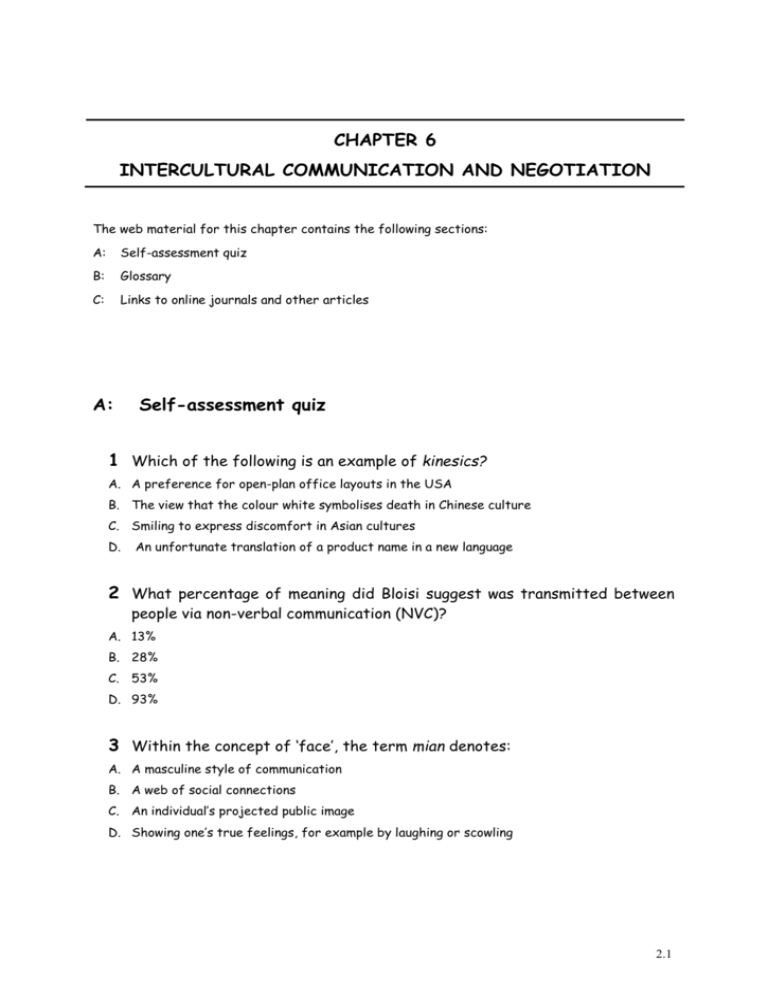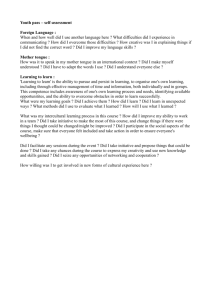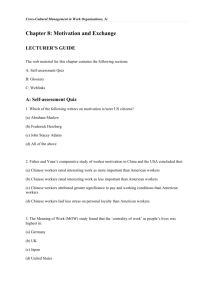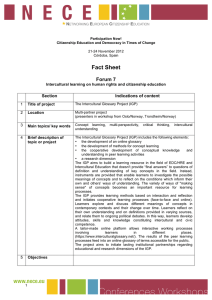chapter 2
advertisement

CHAPTER 6 INTERCULTURAL COMMUNICATION AND NEGOTIATION The web material for this chapter contains the following sections: A: Self-assessment quiz B: Glossary C: Links to online journals and other articles A: Self-assessment quiz 1 Which of the following is an example of kinesics? A. A preference for open-plan office layouts in the USA B. The view that the colour white symbolises death in Chinese culture C. Smiling to express discomfort in Asian cultures D. An unfortunate translation of a product name in a new language 2 What percentage of meaning did Bloisi suggest was transmitted between people via non-verbal communication (NVC)? A. 13% B. 28% C. 53% D. 93% 3 Within the concept of ‘face’, the term mian denotes: A. A masculine style of communication B. A web of social connections C. An individual’s projected public image D. Showing one’s true feelings, for example by laughing or scowling 2.1 4 In which country did Moran et al suggest that negotiators would be most reluctant to express disagreement? A. Germany B. Italy C. India D. Australia B. Glossary Stereotyping – a process by which characteristics are attributed to an individual as a result of their membership of a wider group, for example gender or culture. Decoding – means by which the meaning of communication is interpreted. Proxemics – the use of space in communication encounters. Empathy – a personal characteristic enabling an individual to project oneself into another person’s situation and thereby achieve understanding. C. Weblinks Journal articles cited in the chapter can be accessed online as follows: Gao, F. (2005): www.immi.se/intercultural Sebenius, J.K. (2002): www.hbr.org Gelfand, M.J. and Dyer, N. (2000): www.wiley.com/bw/journal It may be that your university or college library can provide a direct link to these journals. 2.2











